How to grow succulents in a container
 Lee Burkhill: Award Winning Designer & BBC 1's Garden Rescue Presenters Official Blog
Lee Burkhill: Award Winning Designer & BBC 1's Garden Rescue Presenters Official Blog

Planting in pots is a fantastic way for newbies to make their first steps into the gardening world. Time and time again though, I see new gardeners filling pots with a mix of annuals (plants that live for one season before dying) and hanging plants (Ivy and Fuschia are classics). The classic combinations Fuschia, Petunias, Violas, Lavender and Begonias are quickly stuffed into pots watered for a week or two and then left.
The problem is that we often pack far many more plants into a container than we need. This is because it looks too empty when you first plant it. The next problem is as they grow rapidly they require more and more attention. Watering, feeding and deadheading become an almost daily task!
Inevitably people forget or something else takes the place of the pot such as a late night in the office or looking after your family. Then one day you realise you have a grey or crispy dead collection of plants and say to yourself 'Gardening is just not for me'.
Stop right there! It is for you, you just need to find the right plants to start out with gardening. Gardening is a brilliant activity not only for the environment but for your mental health. This guide is going to help you create a garden pot collection that's not only engaging but low maintenance. Meaning that you don't need to set phone reminders just to keep it alive!
Succulents are the terminators of the plant world, they are true survivors with an edgy look. All they require is free-draining soil, ie soil that's not soggy or wet constantly. If you can give them this then they will give you a year-round show, welcoming you home each day with their spiky petals outstretched and waving. As if they are saying 'Welcome home!' They are evergreen meaning when everyone's flowering pots have died yours is still going strong.
This guide is going to help you create a beautiful Succulent pot display that will start you off on your journey into the fascinating world of horticulture with no drama.
In this example, I've chosen House Leeks or Sempervivums (if you want to go Latin on me!). I've chosen them because they come in an array of colours and textures. They have a really distinctive look which I think lends itself perfectly for a container. They cry out to be touched and examined making it a great container idea for a front door or statement piece.
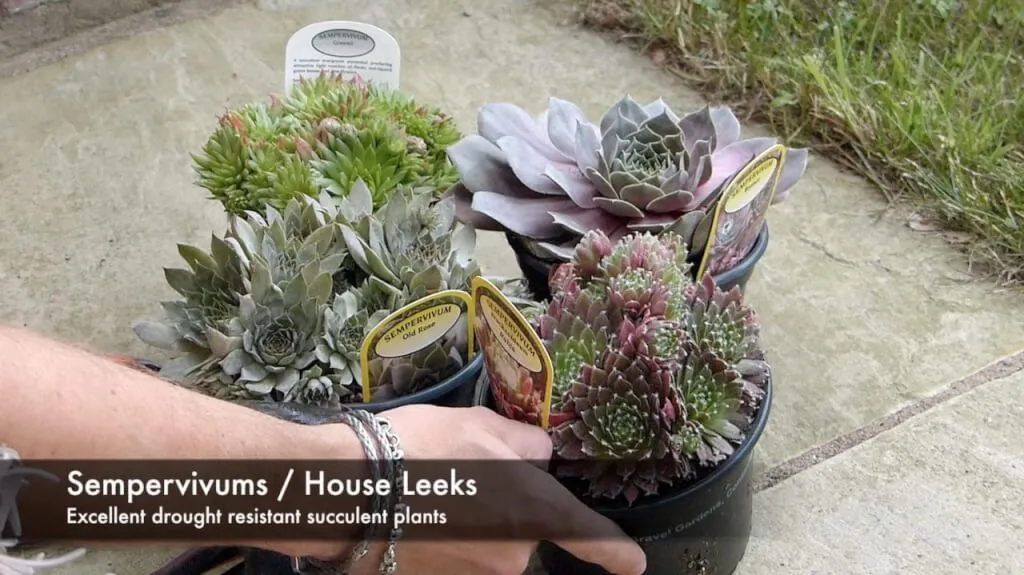
Fill your pot with a mixture of 2/3 multi-purpose compost with 1/3 perlite (or other grit/gravel). This is to ensure the growing media is really free draining. Succulents hate soggy bottoms. If their roots sit in water they will rot and die. This is the Succulents' only real requirement so if we can give them this now, it saves you any plant grief later on.
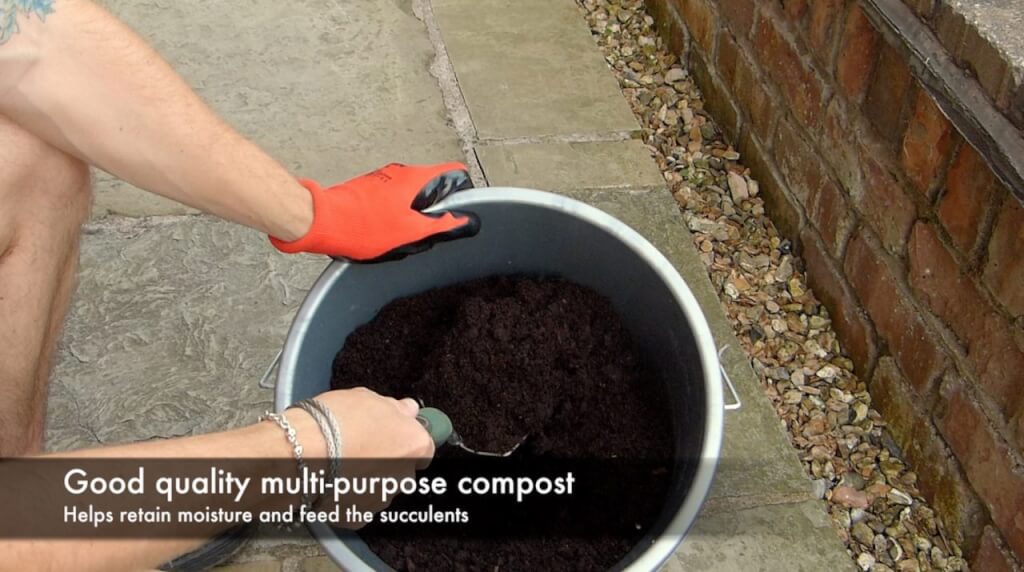
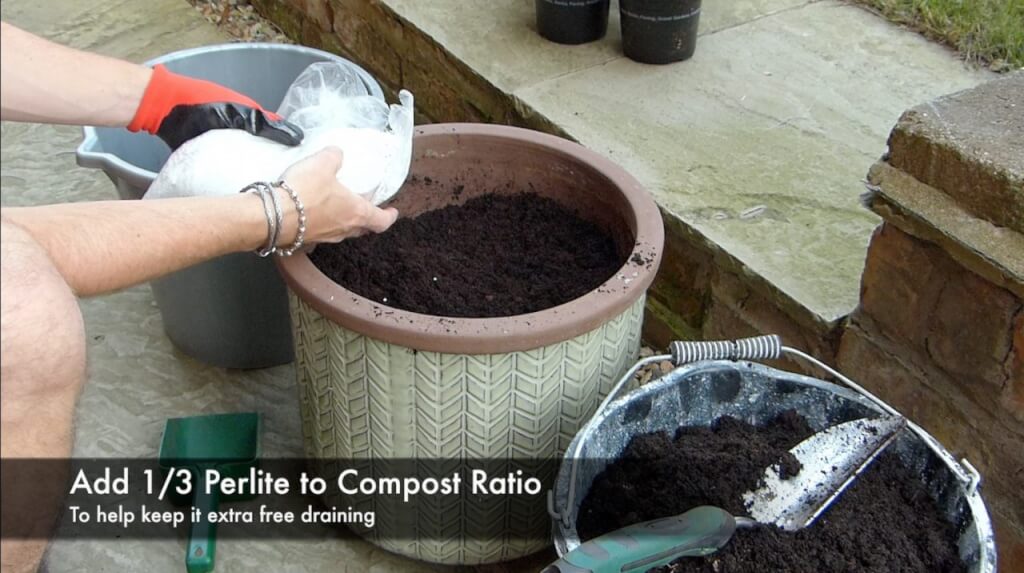
I like to start in the middle with a focal point. This helps draw attention to the largest sized Sempervivum and gives a more natural arrangement. It also means that you don't damage the others as you're arranging them. Succulents can be quite tender when planting s sometimes a little bit of care now can help save damage. If you do damage them, don't worry most will survive so don't beat yourself up.
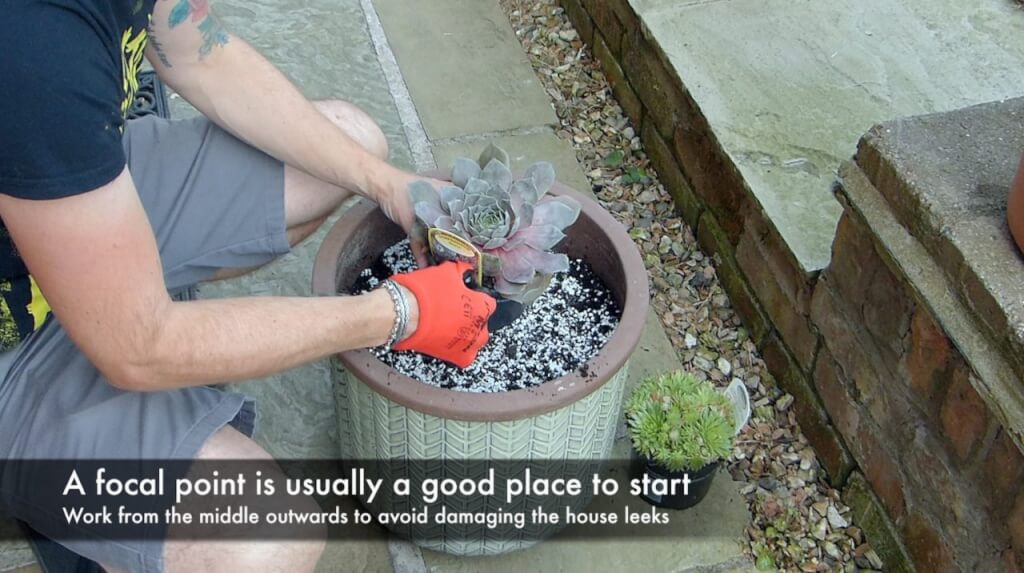
This is key to their survival. You need to make sure that they are well-compacted with free-draining compost. This is to ensure they have a good footing in the pot. If you don't firm them in well enough, roots can be exposed causing them to dry out or even sink when watered. I use a finger or two to push the growing medium in around them.
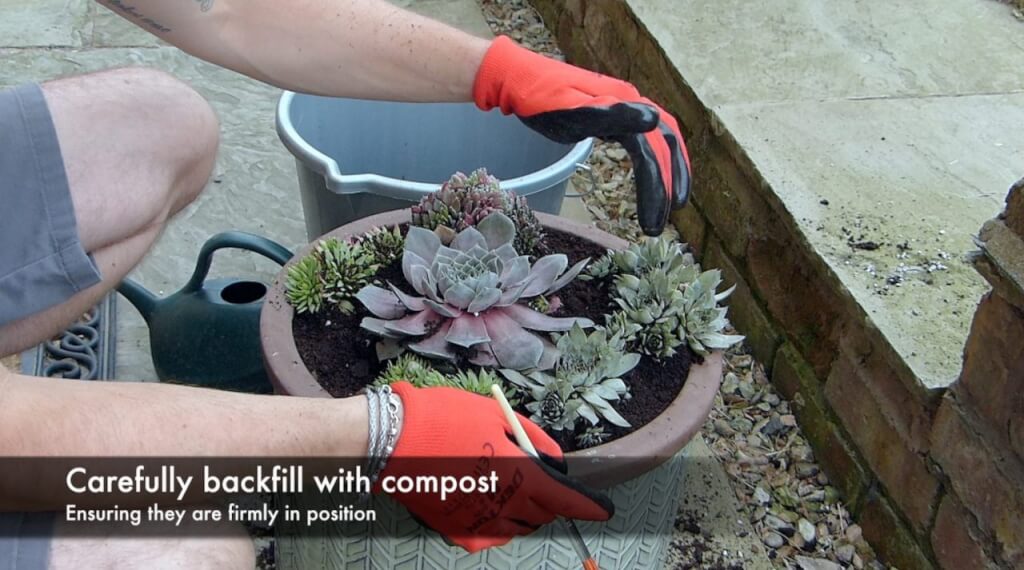
Another good tip is to use a small paintbrush, like the ones you would paint a picture with. You can use this to flick out any dust or debris from the house leaks which sometimes happens when planting.
You've just transplanted them so now they require watering to help settle them in. For the first couple of weeks, I would recommend giving them a good water each week until they start to send out their own roots.
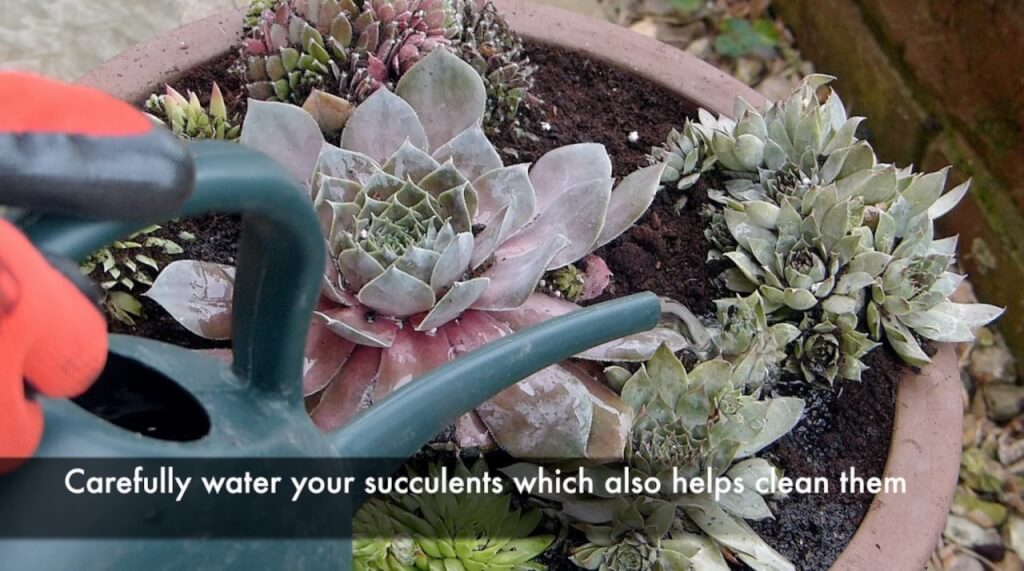
You should now have your beautiful striking succulent garden display ready to show off to the world. Sempervivums are evergreen meaning they will keep their colour year-round and as long as they don't get hit by frost they will survive nearly every type of weather!
Now whilst this creation is super low maintenance there are some things you can do to ensure your succulents survive and even thrive for years.
So there you have it, my super-easy guide to injecting colour and interest into your garden. Succulents really are the sure-fire way to help new gardeners gain confidence with plants. I guarantee that once you've succeeded with these you'll be looking for the next step in gardening challenges. I'd love to hear your thoughts or examples of your own pot creations, so why not drop me a line or post on my social media pages?
You can Tweet, Facebook or Instagram me with your pictures! You can also follow me on Youtube where I’ve got plenty of garden guide vlogs.
Happy Gardening!



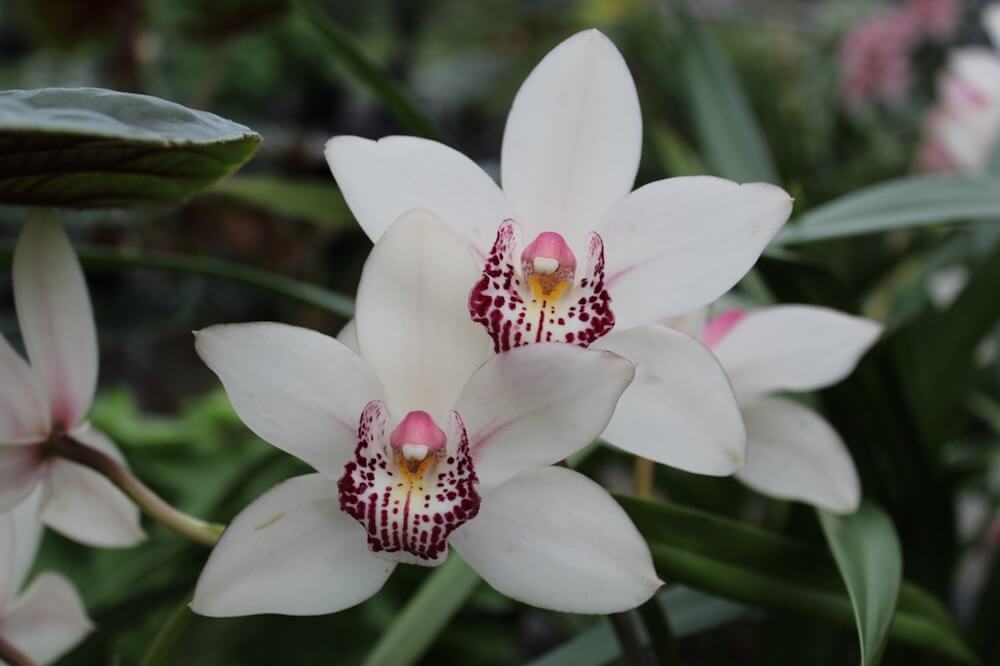
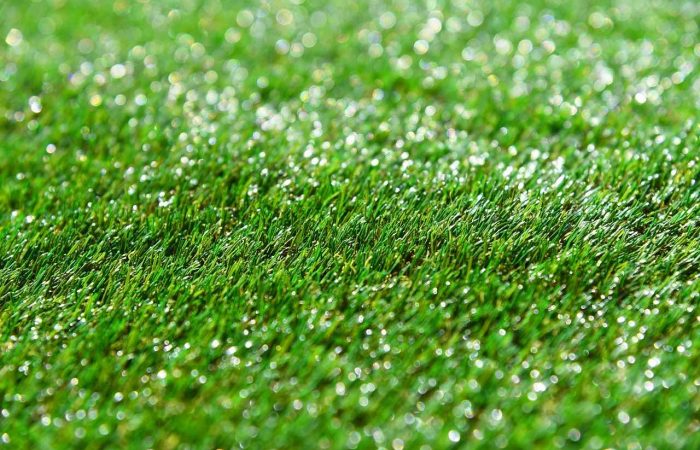
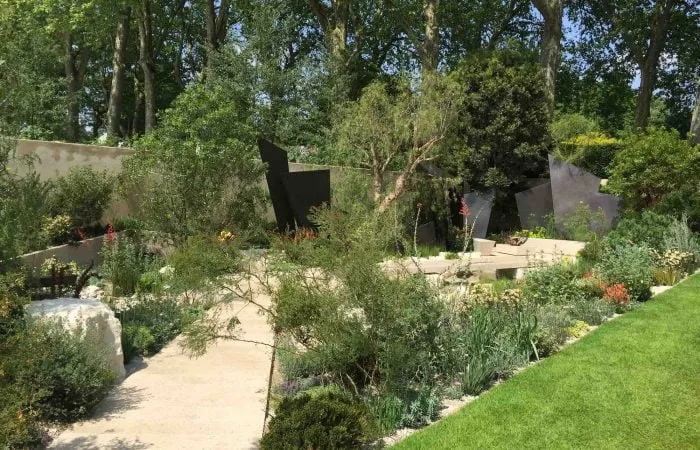
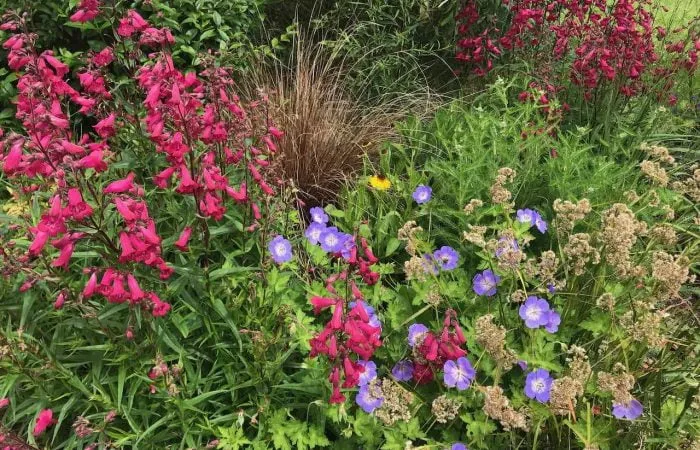
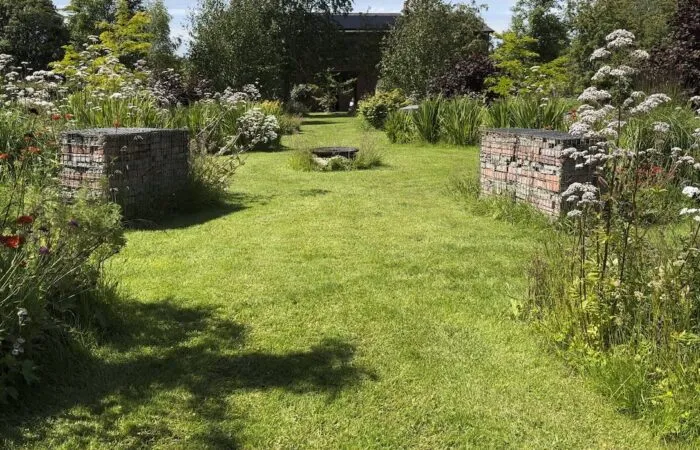
JOIN THE NINJAS

Be the first in line for new Guides, Discount codes and Offers